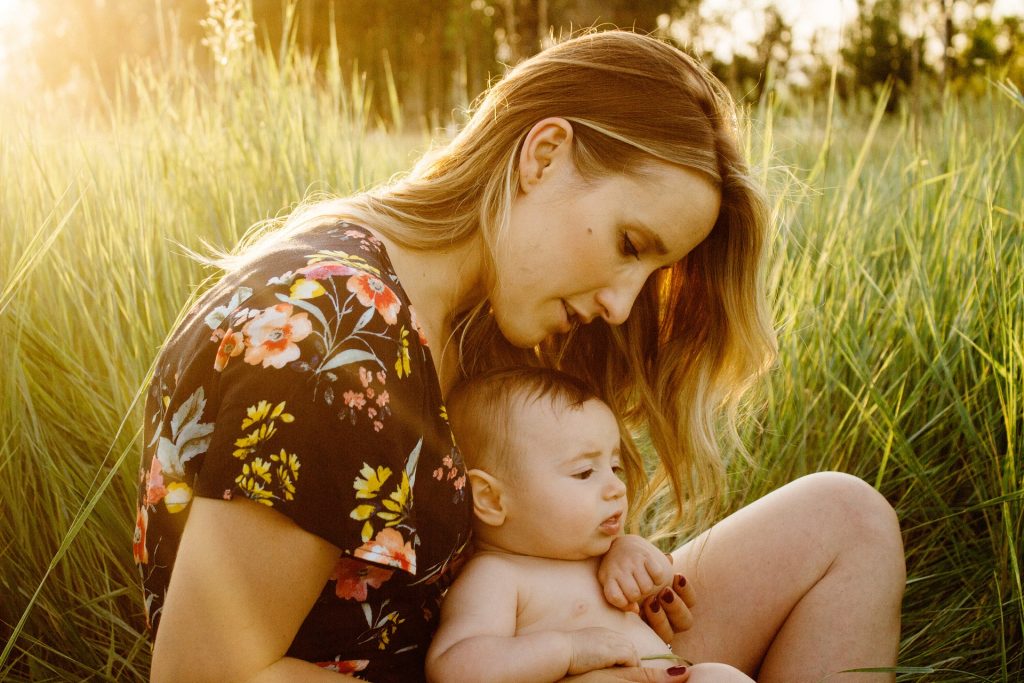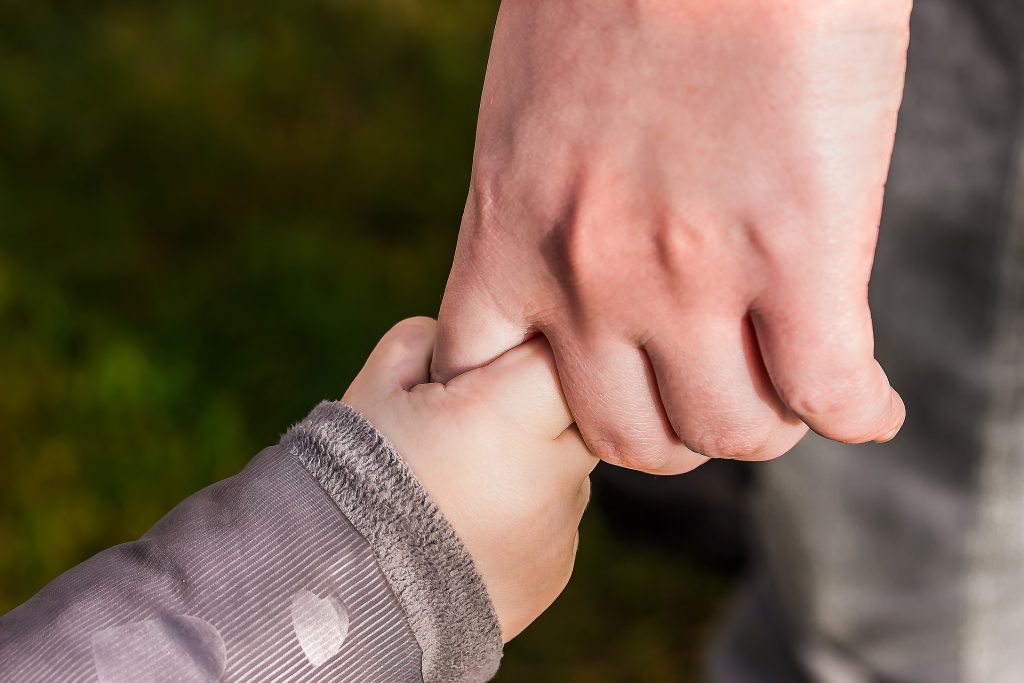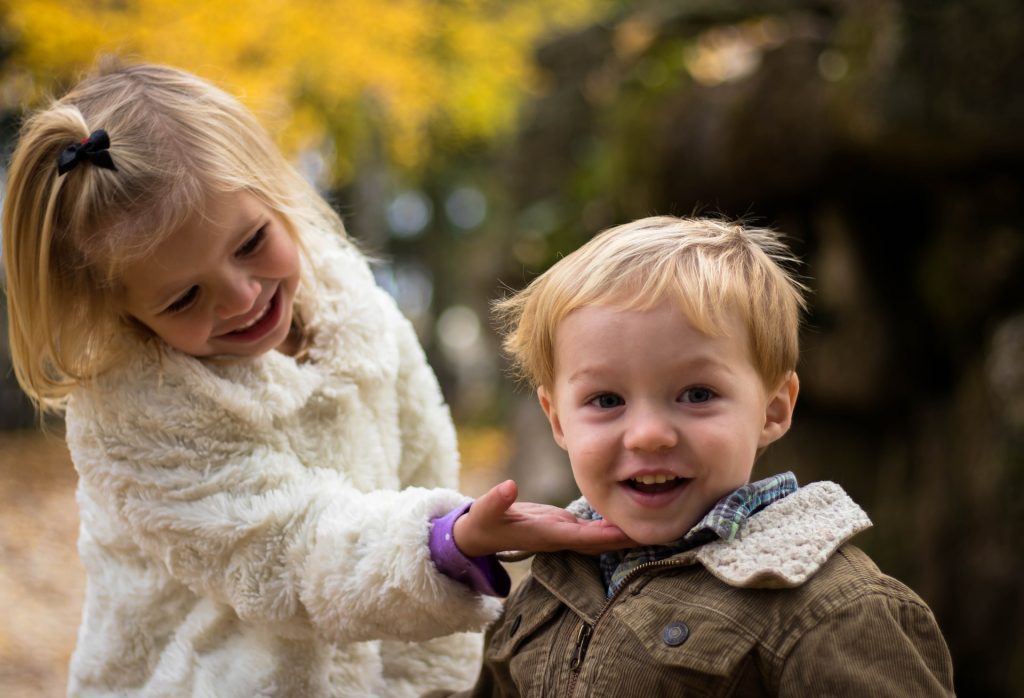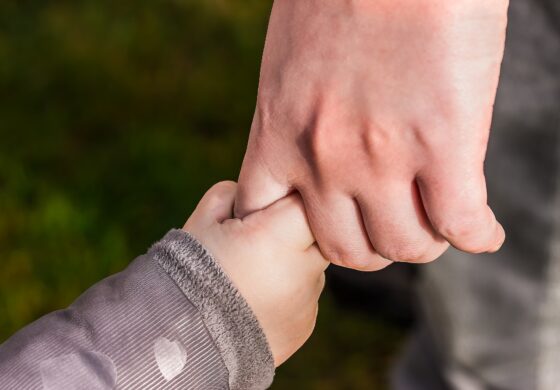Imagine you are a passenger in a car and suddenly a dog wanders into the street in front of you. In the split second you have to communicate to the driver, it feels impossible to calmly state, “Watch out for the dog.” People will point, tap, grunt or squeal to indicate a dog is in the road! When stress and time crunches are involved, sometimes the ability to speak goes right out the window.

In many situations, it is faster and easier to use gestures and body language to communicate. Gestures develop sooner than spoken words in both typically developing babies and children with speech and language delays. Think of a baby reaching their arms out to be picked up months before they can beg, “up, up, uppy!”

We see gestures emerge as early as 6 months of age, and children of deaf parents have shown their first recognizable sign as early as 8 months. Compared that with spoken language: first verbal words are not expected until close to the 12-month mark. (Bonvillian, Orlansky, & Novack, 1983)

Tuning into your children’s body language and gestures will help you know what they want; teaching your baby and young children signs can help decrease frustration and cut down on some tantrums. Young children can access body movements before they can ‘use their words,’ and if they are frustrated, tired, or hungry and on the brink of a tantrum they might not even be able to access them. Their little bodies might already be stressed, and their needs may be urgent, like when you tried to tell that driver about that wayward dog!

Understanding your children’s gestures and teaching signs can help defuse frustration and also facilitate opportunities to practice verbal words. For example, imagine a toddler crying and pointing towards the pantry. A caregiver could respond, “Oh! You’re hungry! You want to eat!” Then, after giving the youngster a snack, the caregiver can sit down with them and practice the word and sign for ‘eat.’ After enough practice the toddler might be able to come up to their caregiver and sign ‘eat’ before tears start.

Pairing a sign and a verbal word will help your baby or child communicate faster and give more opportunities to use verbal words as well. Contrary to some parents’ fears, evidence shows that using signs will not delay a child’s ability to use verbal words (Millar, Light, & Schlosser, 2006). In fact, small studies indicate that signing actually boosts vocabulary during the first two years of a child’s life (Goodwyn et al., 2000).

Stay tuned for a post next week on which signs to get started with, and some tips on how to teach them. If you have any questions or concerns about your child’s ability to use gestures, signs, or words, reach out and we’d love to speak with you!
Anderson D & Reilly J. (2002). The MacArthur Communicative Development Inventory: Normative data for American Sign Language. Journal of Deaf Studies and Deaf Education 7: 83–106
Bonvillian JD, Orlansky MD, Novack LL. (1983). Developmental milestones: Sign language acquisition and motor development. Child Dev. 54(6):1435-45.
Goodwyn, S., Acredolo, L., & Brown, C. (2000). Impact of symbolic gesturing on early language development. Journal of Nonverbal Behavior, 24, 81-103.
Fitzpatrick EM, Thibert J, Grandpierre V, and Johnston JC. (2014). How handy are baby signs? A systematic review of the impact of gestural communication on typically developing, hearing infants under the age of 36 months. First Language. 34 (6): 486–509.
Iverson JM and Goldin-Meadow S. (2005). Gesture paves the way for language development. Psychological Science 16(5): 367-371.
Lederer, Susan & Battaglia, Dana. (2015). Using signs to facilitate vocabulary in children with language delays. Infants & Young Children. 28. 18-31.
Millar, D. C., Light, J. C., & Schlosser, R. W. (2006). The impact of augmentative and alternative communication intervention on the speech production of individuals with developmental disabilities: a research review. Journal of speech, language, and hearing research : JSLHR, 49(2), 248–264.
